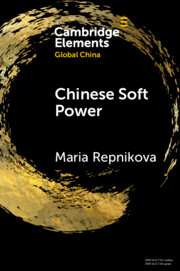Element contents
Chinese Soft Power
Published online by Cambridge University Press: 18 February 2022
Summary
Information
- Type
- Element
- Information
- Series: Elements in Global ChinaOnline ISBN: 9781108874700Publisher: Cambridge University PressPrint publication: 28 April 2022
Bibliography
Accessibility standard: Unknown
Why this information is here
This section outlines the accessibility features of this content - including support for screen readers, full keyboard navigation and high-contrast display options. This may not be relevant for you.Accessibility Information
- 79
- Cited by
